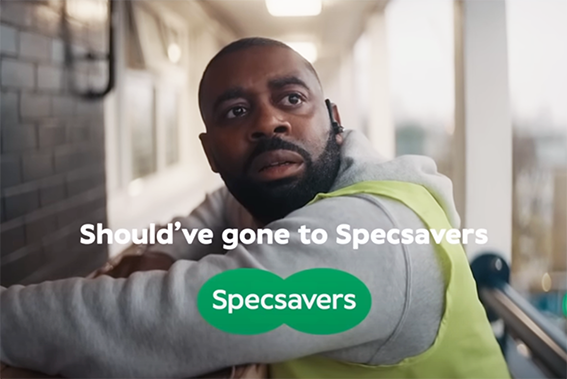Opinion
With in-housing on the rise and a continued focus on efficiency and targeting, the industry could do better to quantify the value of creativity.
New year, new same old or change in the air?
The ad industry faces some challenges — not least the continuing trend for clients to do things themselves.
Hardly a week passes without the announcement of yet another “in-house agency”. Some of this is puff, as it’s only recall of a few services, but some are more threatening.
Taking things in-house has advantages — proximity to marketing, commercial/trading and other relevant teams; alignment with business issues; perhaps speed of response, especially in online channels; and immersion of social teams. And why pay if you can do something yourself?
Competitive advantage
From Peter Field and Les Binet outwards, it’s now accepted that creativity is the key means of competitive advantage in communications.
Yet the focus continues to be on efficiency, targeting, tech. LinkedIn is riddled with posts about sourcing/resourcing/process and so on. There’s far less about the “secret weapon” of creative.
The old legacy media buying clout arguments don’t work in the biddable media space, where most of the money is now going, hence media agencies’ pivot from buying muscle to planning acuity.
Some report dividends from their significant investment in data, in some cases even claiming positions as arbiters of creative advertising effectiveness.
Creative agencies continue to struggle. Few can justify results-based charging and fewer want to, as it can depend on factors beyond their control.
Brand-building is slow and therefore costly. Many have diversified or merged with experiential. Project work abounds.
Demarcation with production houses is blurred when agencies, driven by clients’ increasingly transactional demands, become ad factories, churning out expedient, questionably relevant, commoditised “content” to short deadlines. AI will worsen this.
Human interactions
Agency work has always been relatively insecure, but when even the wealthy tech companies are cutting back on staff, job security figures high for those with families and mortgages. Much has been written about the predicament of the younger workforce; there has been rather less about the wellbeing, performance and effectiveness of middle to senior management.
Agencies used to be quite cool environments, but many now resemble their clients’ offices. Little wonder many embraced flexible working post-Covid-19, as property prices, hostelry footfall and commuter travel data attests.
Companies have realised their initial enthusiasm was hasty and are trying to retrieve their workforces — especially in areas where personal interactions are so critical.
However hard the tech-led industry tries to transactionalise creativity, it’s the human stuff that creates the precious competitive advantage. Sometimes you just need to go to the pub or wherever — maybe a movie — that rings your creative bells. Yep, in work time.
Diversity of challenge
For in-housers, diversity of outlook is also an issue. One of the attractions of agency work is diversity of challenge. Today, ice-cream; tomorrow, cars or mortgages. Most in-house work is necessarily narrower.
And it’s harder to dismiss staff than suppliers.
Hence the rise of companies like Oliver, which specialises in creating and providing in-house agency services from outside. As you’d expect, there’s an industry grouping: the In-House Agency Leaders Club.
Most of the holding groups also feel compelled to support their clients as they in-house. To me, this is akin to brand owners also manufacturing own-label: a source of much debate — and regret.
Whether talent, gestation periods or the craft of brilliant execution, creativity is precious, scarce and expensive.
One anomaly
The only advertiser that bucks all the arguments is the “poster idol” of in-housing: Specsavers.
It’s the only in-house business that consistently gives the ad industry a run for its money. Awards juries used to seek any way of denying it, until its ads became undeniably popular/effective — and were often entered and championed by media agencies. It completely gets creativity.
Many advertisers’ boards and shareholders assert that their customers get what they pay for when it comes to their brands and indeed understand how it keeps them afloat.
But too few carry this view across to the unique competitive advantage offered by advertising creativity.
Despite the sluggish economy, budget forecasts aren’t tight (see Omar Oakes’ recent column) and, given our job is to persuade, might we do better? A yet more concerted effort to protest (and quantify) the value of creativity, alongside a stiffer approach to new business, charging and business terms?
To quote an old boss, a distinguished senior marketer: “You can’t save yourself rich.” Rather more bluntly (and I’m sure Dave Trott and other luminaries might discreetly agree), nor can you polish a turd.
 Bob Wootton spent 40 years working in advertising, first as a media buyer at some of the UK’s leading agencies before joining the trade body ISBA in 1996, where he was advertising and media director for 20 years. He is also the founder of Deconstruction, a media and tech consulting business, and presents The Guitar Show on YouTube.
Bob Wootton spent 40 years working in advertising, first as a media buyer at some of the UK’s leading agencies before joining the trade body ISBA in 1996, where he was advertising and media director for 20 years. He is also the founder of Deconstruction, a media and tech consulting business, and presents The Guitar Show on YouTube.
Adwanted UK are the audio experts operating at the centre of audio trading, distribution and analytic processing. Contact us for
more information on J-ET, Audiotrack or our RAJAR data engine. To access our audio industry directory, visit
audioscape.info and to find your new job in audio visit
The Media Leader Jobs, a dedicated marketplace for media, advertising and adtech roles.





 Bob Wootton spent 40 years working in advertising, first as a media buyer at some of the UK’s leading agencies before joining the trade body ISBA in 1996, where he was advertising and media director for 20 years. He is also the founder of Deconstruction, a media and tech consulting business, and presents The Guitar Show on YouTube.
Bob Wootton spent 40 years working in advertising, first as a media buyer at some of the UK’s leading agencies before joining the trade body ISBA in 1996, where he was advertising and media director for 20 years. He is also the founder of Deconstruction, a media and tech consulting business, and presents The Guitar Show on YouTube.